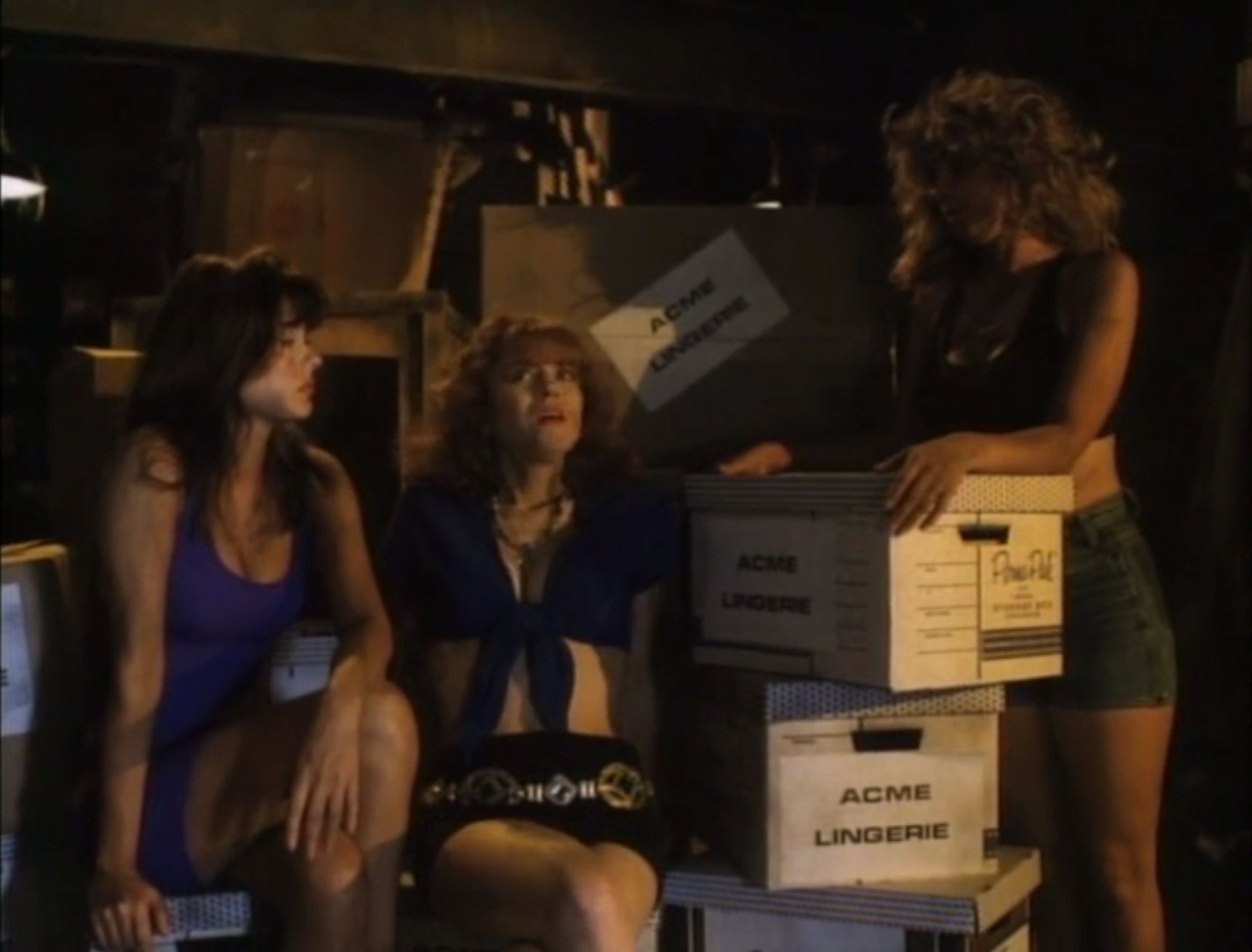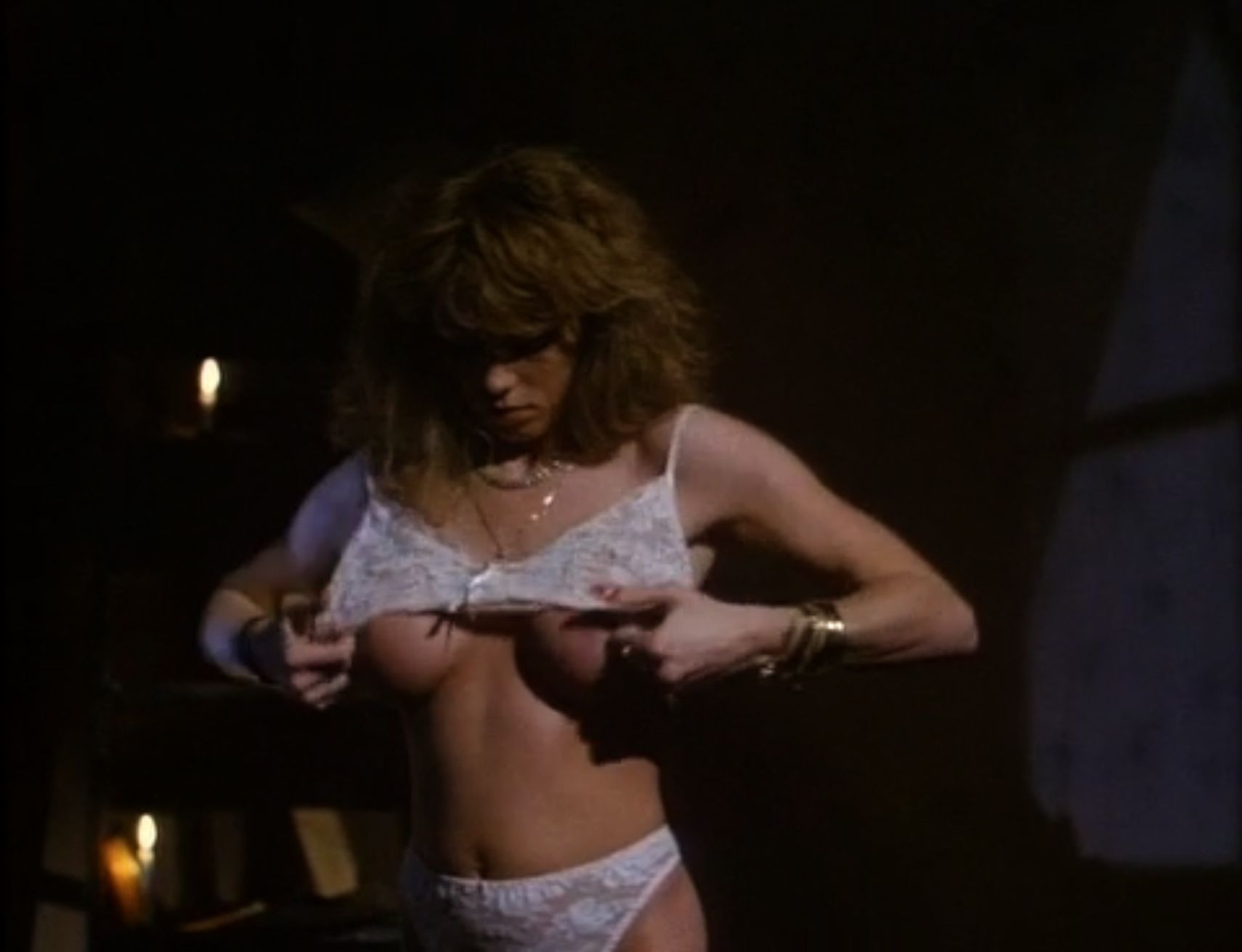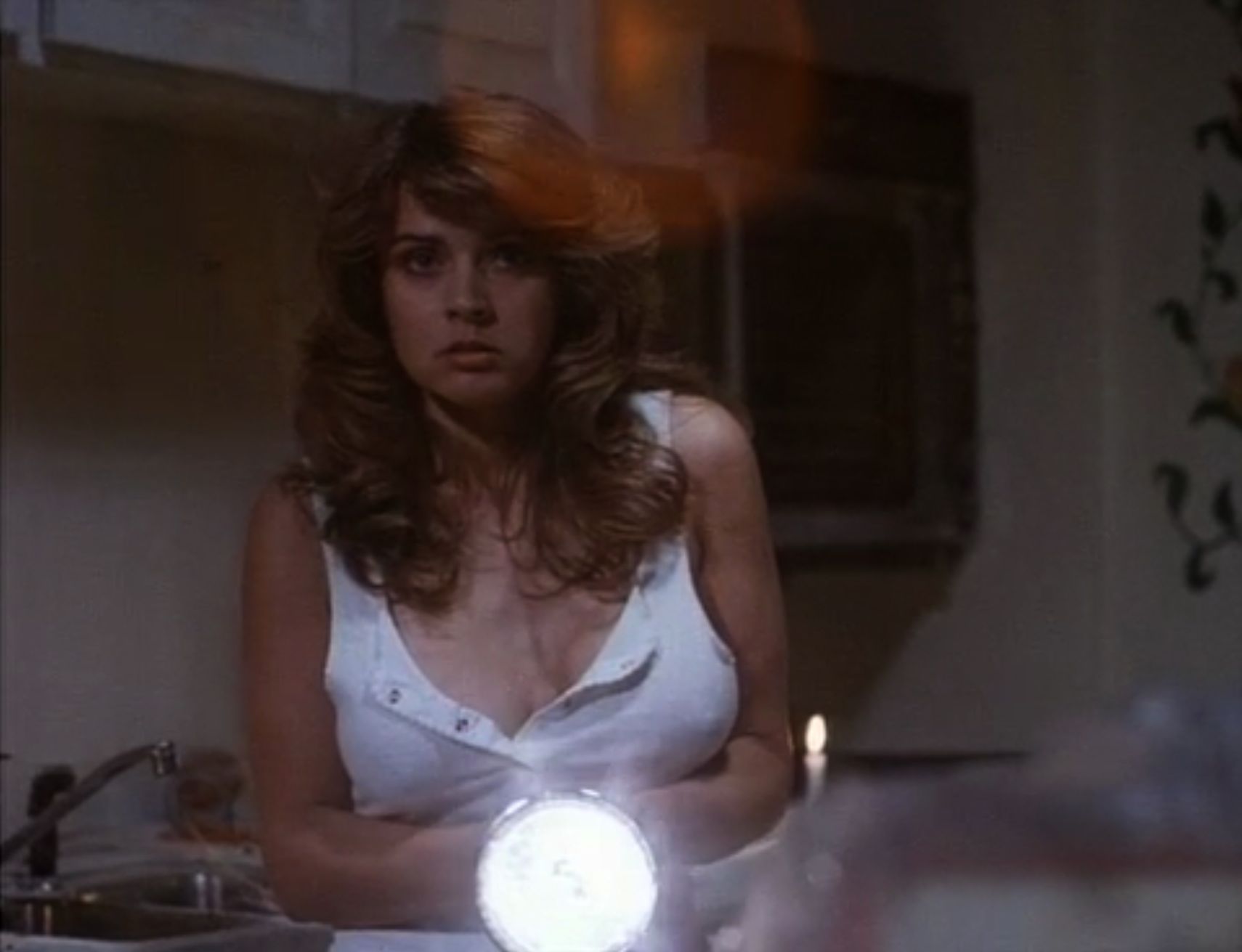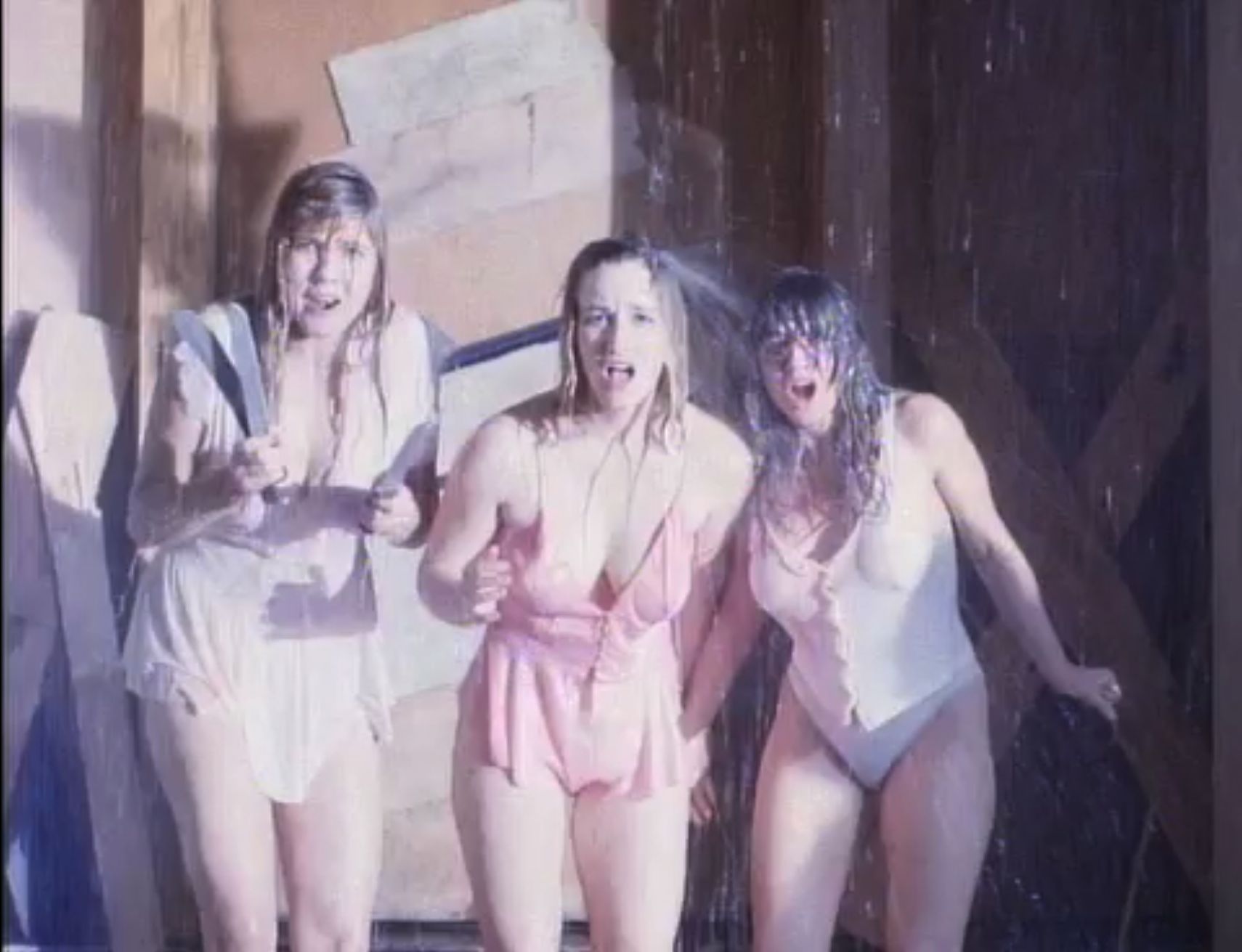The Wynorski Project Part Eight & Nine Continued
 Sunday, March 27, 2011 at 4:55PM
Sunday, March 27, 2011 at 4:55PM The Wynorski Project
Sorority House Massacre II & Hard to Die
(1990)
Part Two
Two weeks ago I expressed my amazement over the sheer chutzpah of these two films. Sorority House Massacre II being a sequel that not only completely ignores the first Sorority House Massacre, but even goes so far as to us flashback footage from Slumber Party Massacre instead. Amazingly, that same footage appears again in the concurrently filmed Hard to Die, which was obviously shot with a script only slightly altered from the one used for SHMII, making it perhaps the first instant remake of an in-name-only sequel ever made.
As a result of these shenanigans, Wynorski seems to have inadvertently created his first meta-movies—making two unconsciously post-modern films that work far better as his commentary on the state of independent genre filmmaking in the 90s than they do as actual independent genre films.
In a climate where the desire for instant profitability turned the concept of what a sequel actually was essentially meaningless, it makes sense that Wynorski would prove utterly indifferent to the original SHM. If the only thing that mattered was that they shared the same title, why bother even attempting to connect them beyond that? And if flashback footage was needed to flesh out the plot (and add valuable running time) why not take it from a superior film? Why settle for less if you didn’t have to?
And by the same token, if you’re making a sequel that is essentially an original film, why not produce an alternate version that could be sold as just that? With most films feeling so interchangeable by that time, what were the chances anyone was ever even going to notice?
With these two films Wynorski is explicitly stating his belief that plot itself has no bearing or meaning in the genre universe. All that matters is you provide the proper amount of tits, ass and blood, without which SHMII and Hard to Die would cease to exist. The question then is whether or not he is indicting us for watching them or instead freeing himself from the yoke of narrative tyranny. Is it that he's pissed at his audience for being so base in their desires? Or is he thrilled by the opportunity to make movies entirely defined by the elements he himself so clearly enjoys?
The idealistic optimist in me wants to believe it’s the latter, but watching the films it becomes hard not to conclude the former. Despite his reputation as a director who just likes to surround himself with busty babes, both films clearly move beyond the veil of gentle satire into something far more brutal and unpleasant. By boiling down a genre frequently scorned for consisting only of pretty naked girls being murdered in various unpleasant ways to nothing beyond those purest elements, Wynorski removes any potentially vindicating subtext from the films, turning them into exactly the kind of films critics might deservedly condemn. Based on the legal definition of a work designed purely to arouse the prurient interest, it becomes difficult to see them as anything other than grimy softcore pornography.
And what’s wrong with that?
Absolutely nothing, so long as you have access to a shower afterwards.
Of the two films, SHMII is by far the more cynical and disturbing, thanks to an ending that serves as a direct rebuke of the cliché that most often exonerates the slasher genre from frequent accusations of misogyny.
SHMII begins with Linda (Gail Harris, a British “Page-3” model who plays the heroine in both this and Hard to Die and whose strong Yorkshire accent is never explained or justified in either film) begging an unseen force for mercy before flashing back to the moment she and her friends arrived at the location where the titular massacre will eventually occur.
With this she is clearly established as the film’s “final girl”—a designation that is supported by the fact that she is clearly the most sensible, intelligent and levelheaded member of the group (which admittedly is—at best—a negligible achievement).
Her heroics, however, are undermined by a twist presented in both films, in which the characters she plays mistake the creepy neighbor/janitor Orville Ketchum as the maniac, when its really one of her friends/co-workers possessed by the evil spirit of a dead psychopath. In both films the majority of the humour is based on Ketchum’s superhuman ability to absorb her punishment—a trait usually found in slasher stalkers, not innocent dupes.
The problem with SHMII is that following the climax where Linda manages to dispatch the true killer, there’s a coda where the police arrive at the scene of the crime and discover that she has now become possessed by the killer, which causes Ketchum to jump up from catastrophic injury once more and blow her away. He, naturally, manages to survive the hail of police gunfire that results.
On its face it's simply a semi-clever inversion of the cliché in which the seemingly unkillable killer is finally dispatched by the resourceful pretty girl, but by robbing Linda of her victory it becomes impossible to justify the sexualized carnage that came before it. I suppose the point is meant to be that there’s no good reason why the hero of a slasher film can’t be a creepy fat guy, but this is immediately undone by the simple fact that there is a very good reason why the resourceful pretty girl is almost invariably portrayed as the one who is victorious.
 The only way to justify the ending is to assume that the audience should have identified with Ketchum instead of Linda in the first place. The implication being that most of the people watching the movie look far more like him than they do Harris. As true as this may be, the result is not a flattering portrait of the viewer. Instead of following the traditional mode in which the viewer firsts identifies with the killer as they dispatch a series of assholes who don’t deserve to live, then shifts their allegiance once the killer trains their focus on the virtuous good girl who represents the viewer at their best, SHMII asks us to cheer on the deaths of the hot sorority chicks, but then refuses to allow us to identify with the heroine whose actions will mitigate our initial bloodlust. By killing off Linda and leaving Ketchum alive, Wynorski leaves us unable to justify our lack of sympathy for the film’s victims, which ends the film with a disturbingly nihilistic tone.
The only way to justify the ending is to assume that the audience should have identified with Ketchum instead of Linda in the first place. The implication being that most of the people watching the movie look far more like him than they do Harris. As true as this may be, the result is not a flattering portrait of the viewer. Instead of following the traditional mode in which the viewer firsts identifies with the killer as they dispatch a series of assholes who don’t deserve to live, then shifts their allegiance once the killer trains their focus on the virtuous good girl who represents the viewer at their best, SHMII asks us to cheer on the deaths of the hot sorority chicks, but then refuses to allow us to identify with the heroine whose actions will mitigate our initial bloodlust. By killing off Linda and leaving Ketchum alive, Wynorski leaves us unable to justify our lack of sympathy for the film’s victims, which ends the film with a disturbingly nihilistic tone.
And this in itself wouldn’t be such a big deal if Wynorski had shown any restraint in his portrayal of the female cast, but by presenting them all as brainless, sex-obsessed bimbos who spend the majority of the film running around in lingerie so ill-defined I would get banned from YouTube (again) if I featured them here in clip form, it becomes impossible to not conclude that his intentions were not merely unintentionally misogynistic, but deliberately so.
Okay, so that’s enough for this week. Next week I’ll conclude my look at these two films by exploring the alternative film universe Wynorski creates in SHMII and the potential indications of self-loathing found in his cameo as a director in Hard to Die.
Next Week
Sorority House Massacre II and Hard to Die
Concludes






Reader Comments